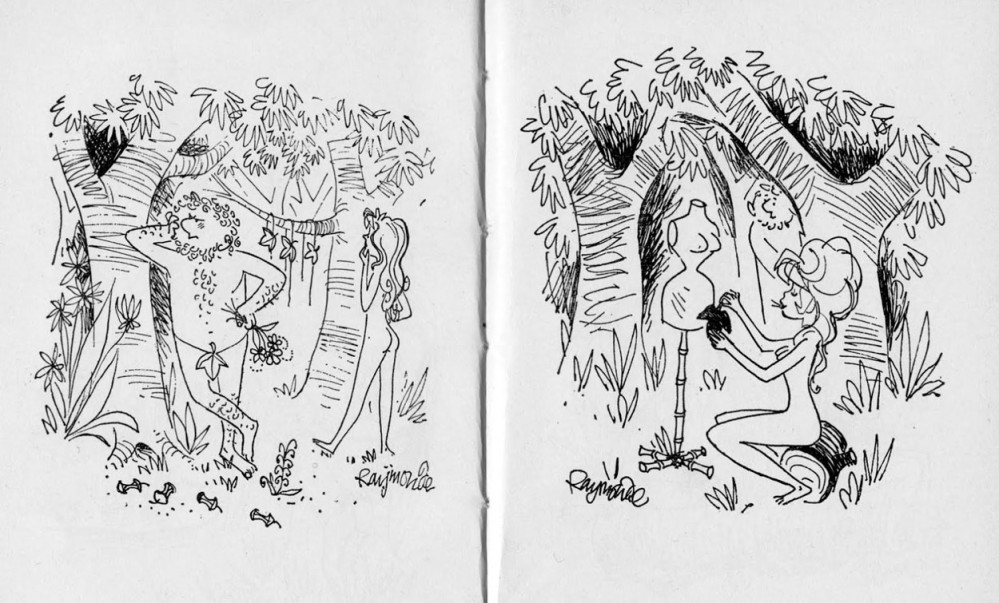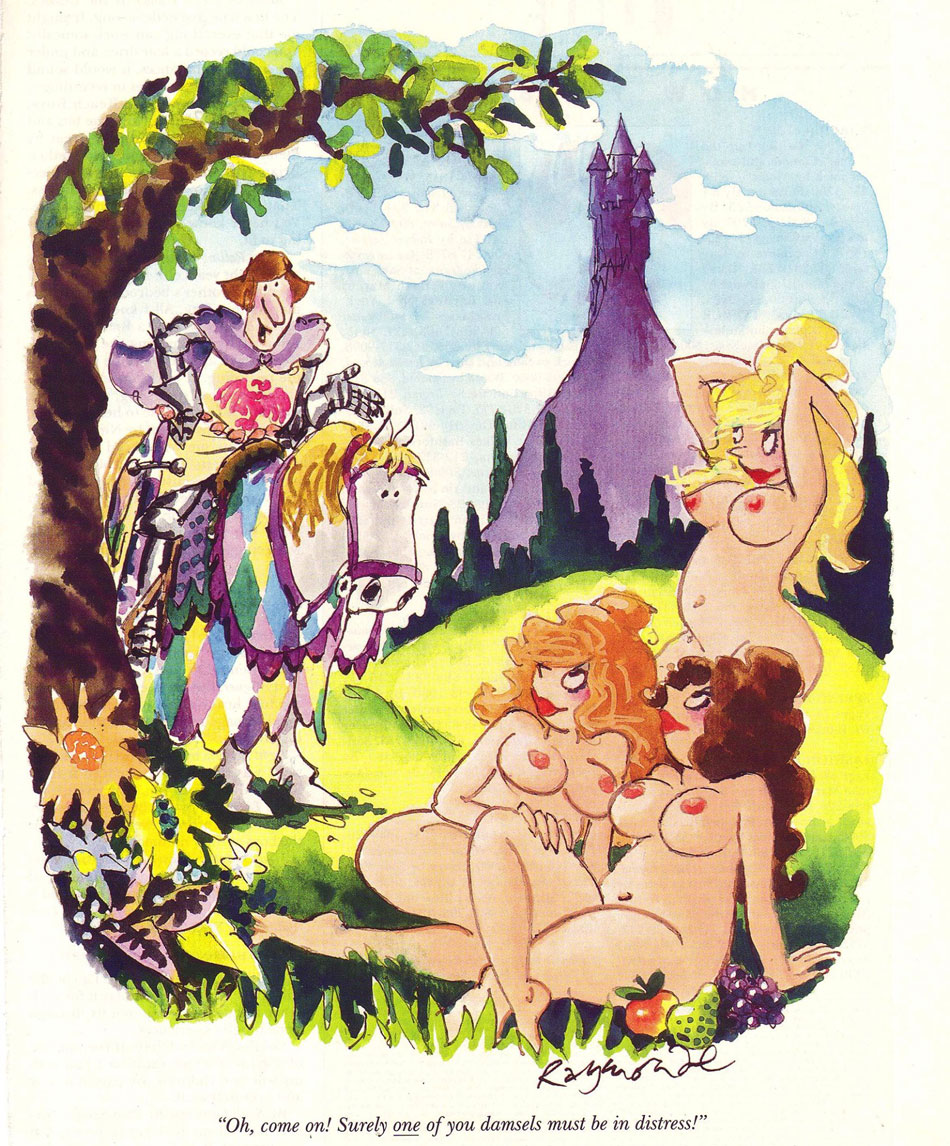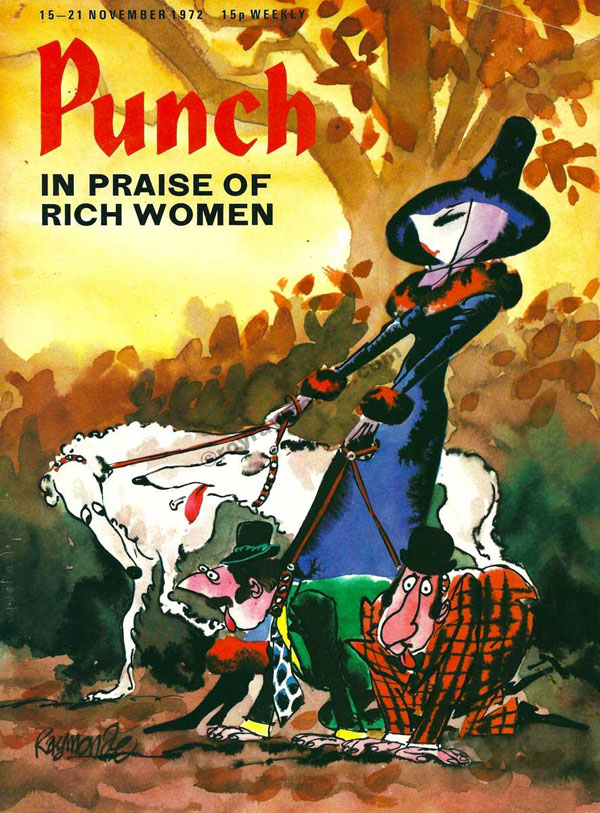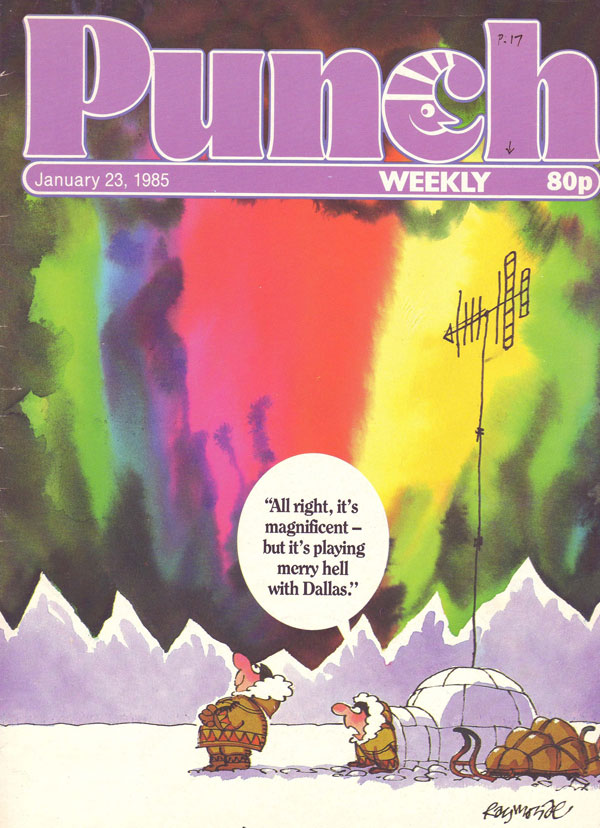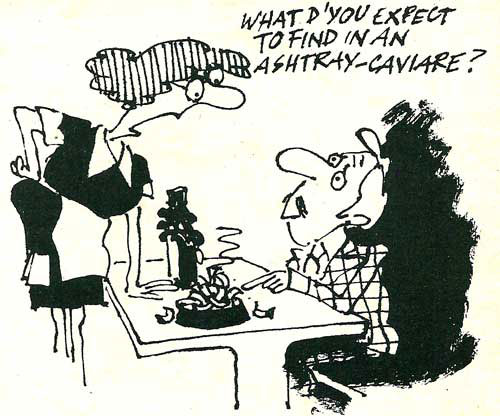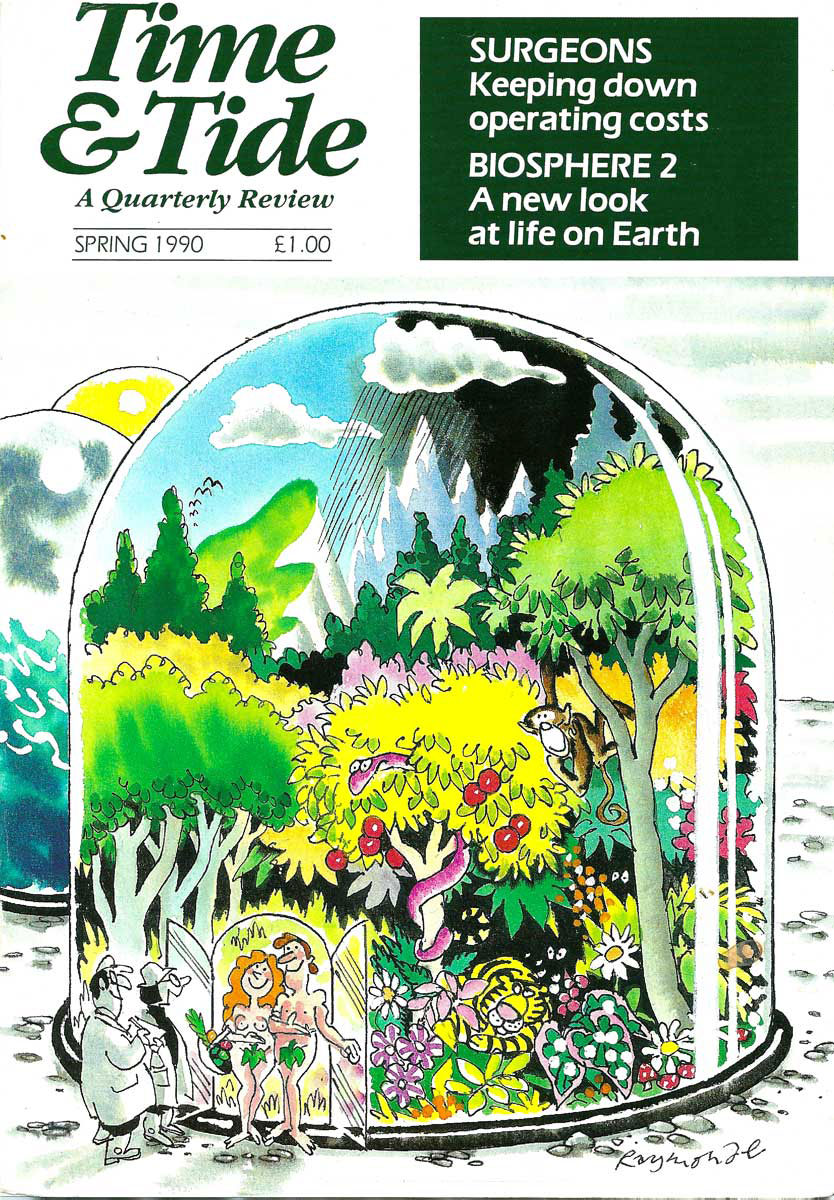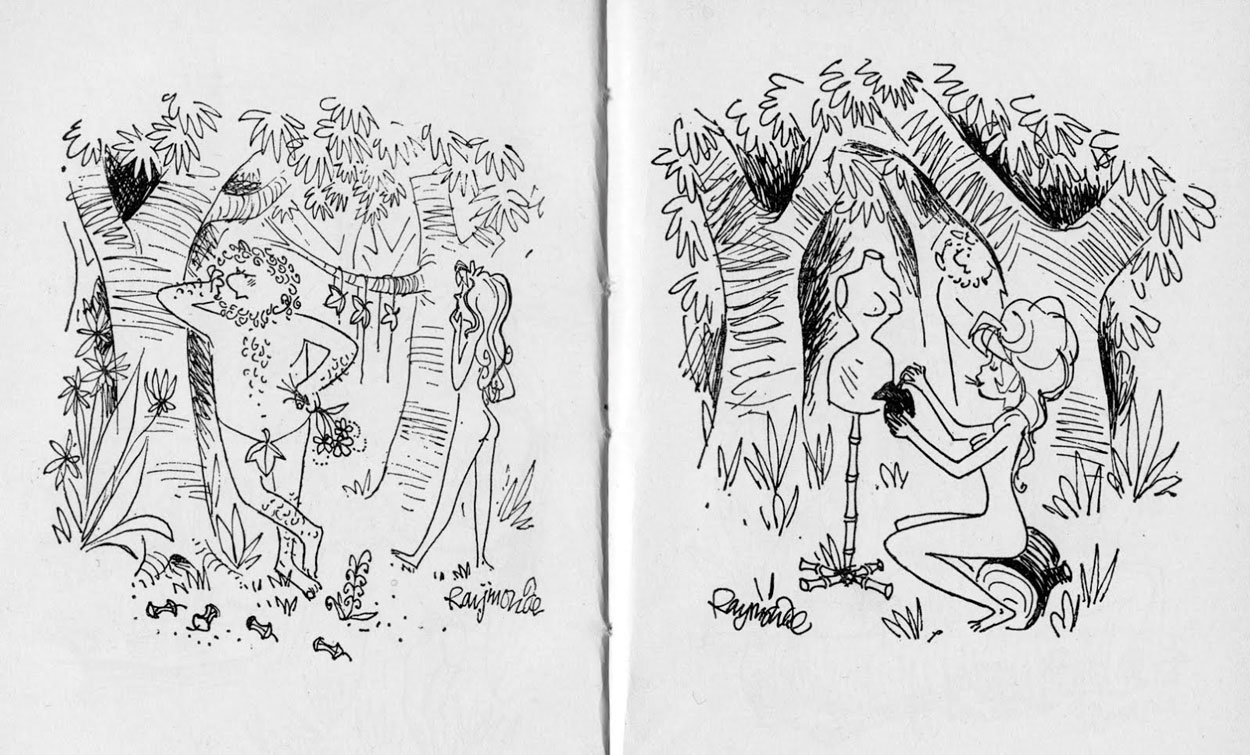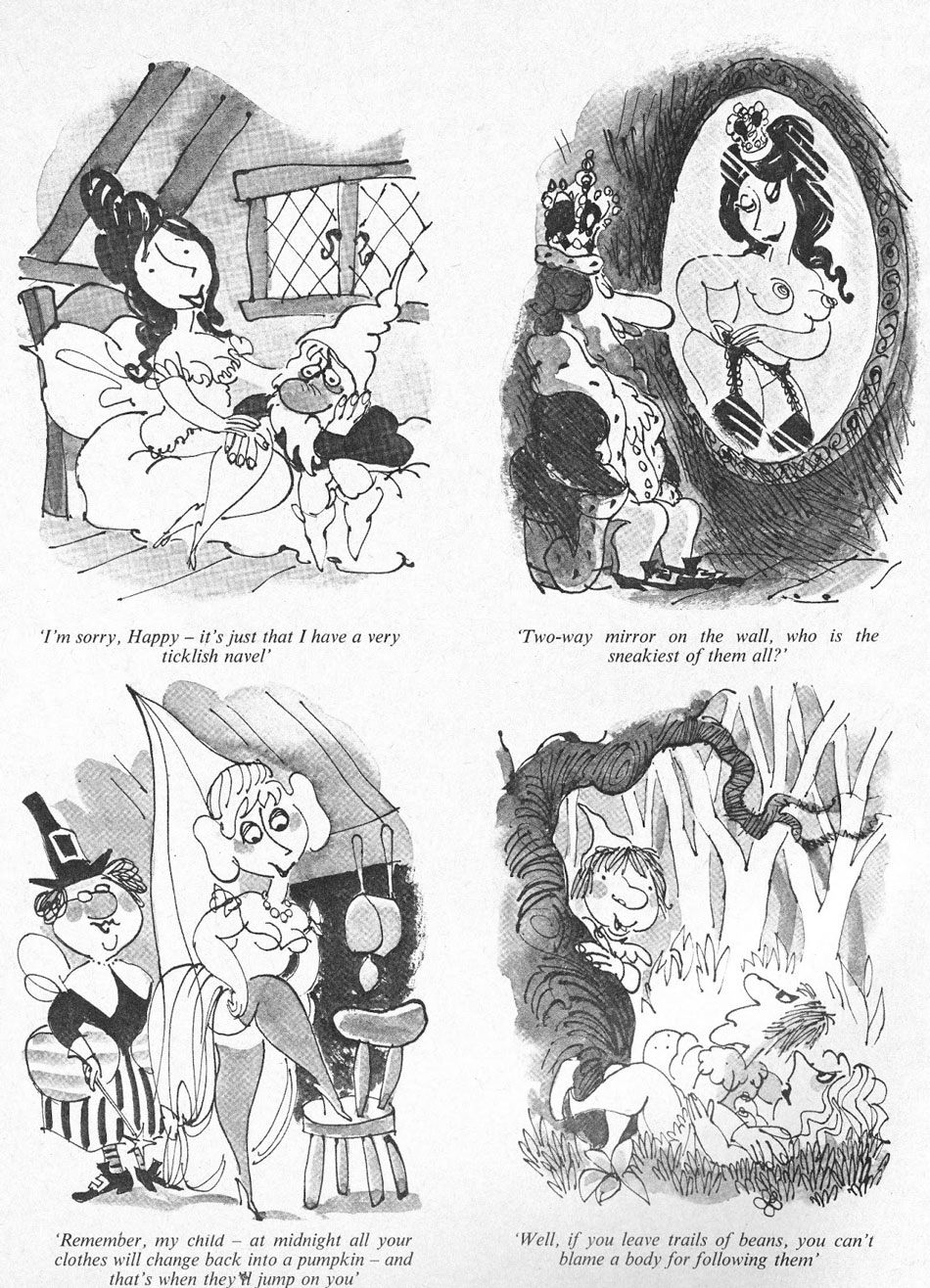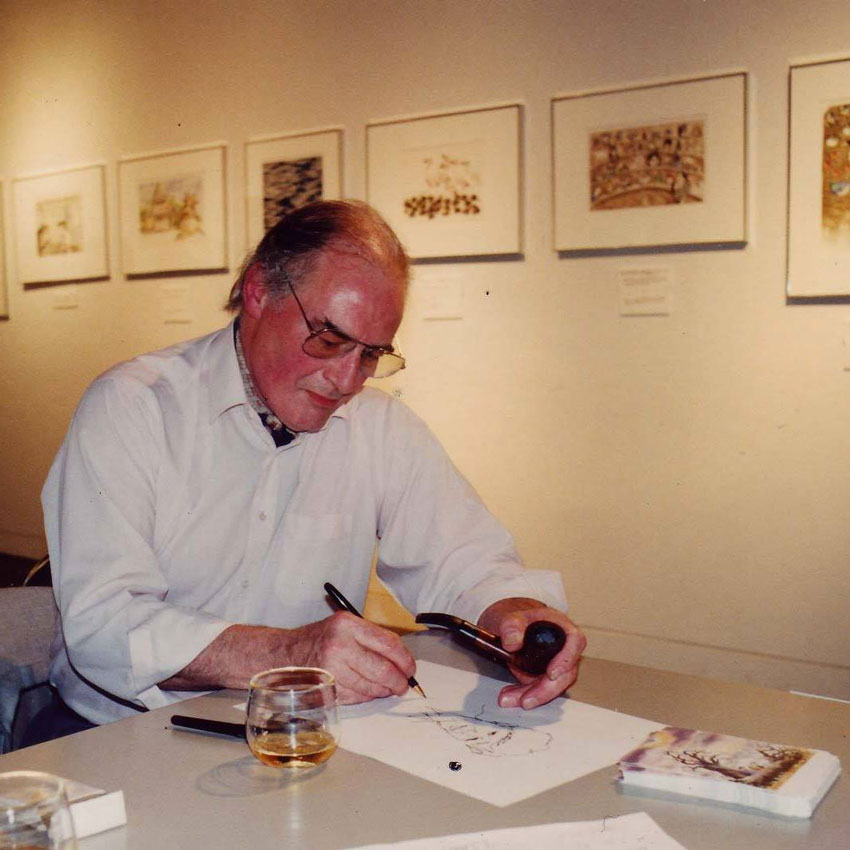Roy Raymonde was a British editorial cartoonist, known for making several erotic one-panel cartoons for men's magazines like Mayfair and Playboy. Between the 1950s and the 1980s, Raymonde drew several long-running single-panel cartoon series, including 'Lil' (in Drapery & Fashion Weekly), 'Patsy & John', 'Them', 'Boffins at Bay', 'Raymonde's Rancid Rhymes' and Raymonde's Blooming Wonders' (all in the Sunday Telegraph), 'Mr. Meddle' (Catering Times) and 'Doc Brief' (1985-1988, in Punch).
Early life and education
Roy Stuart Raymonde was born in 1929 in Grantham, Lincolnshire, but spent most of his early years in Bristol. His father was an advertising agent and theatrical impresario who in 1938 unexpectedly died from pneumonia. Raymonde was around nine years old at the time, while his mother was expecting a second child. Now the only breadwinner, she took several jobs in various towns, forcing her son to move around a lot. By 1940, when World War II was in full effect, the family settled in London. According to legend, one day their house was demolished by a German land mine. Fearing the boy was dead, the firemen feverishly dug through the rubble only to find him fast asleep with the blankets pulled over his head, almost unaware of the debris and chaos around him.
As Raymonde was good at drawing from a young age, in 1944 he enrolled at the Harrow School of Art, where cartoonist Gerard Hoffnung was one of his teachers. One day, Raymonde added humorous captions to one of Hoffnung's instructional drawings. Other teachers were so outraged that they wanted to expel the boy, but Hoffnung defended him and Raymonde could stay. Raymonde always regarded Hoffnung as both one of his strongest graphic influences and a lifelong friend. They kept in touch until Hoffnung passed away in 1959. Other major graphic inspirations of Raymonde were Thomas Rowlandson, Ronald Searle, Quentin Blake, Adolf Born, André François and Tomi Ungerer. In 1946, Raymonde dropped out of Harrow School.
Cover cartoons for the Punch issues of 15 November 1977 and 23 January 1985.
Early career
In 1946, Roy Raymonde worked for a commercial art studio. Between 1948 and 1950, he was drafted in Malaya (today Malaysia) for the British Army intelligence, specializing in photo reconnaissance. Back in civilian life, Raymonde worked as an advertising artist for Charles Gilbert's advertising agency in London. During the 1950s, he published freelance one-panel cartoons in magazines like The Daily Mirror, The Daily Sketch, Lilliput, Men Only, Star and the tabloid Tit-Bits. For the Drapery and Fashion Weekly, he drew a gag cartoon series titled 'Lil', which ran from the late 1950s until the 1980s. The title character is a young woman who works in a clothing store. By the 1960s, Raymonde was able to work as a full-time cartoonist, settling in Great Dunmow, Essex by 1963, where he lived for the rest of his life.
Punch
In 1960, Raymonde became one of the regular cartoonists in Punch magazine. He often designed their covers and illustrated Dr. Robert Buckman's humorous column 'Doc Brief' (1985-1988), featuring funny reflections on doctors, nurses and their patients, but also witty deconstructions of quacks and common misconceptions about health and medicine.
'Mr. Meddle'.
The Sunday Telegraph
Between 1969 and 1972, Raymonde's comic strip 'Patsy & John' ran in the newspaper The Sunday Telegraph. He also drew other features for this paper, including 'Them', 'Boffins at Bay', 'Raymonde's Rancid Rhymes' and 'Raymonde's Blooming Wonders'. 'Them' was a single one-panel cartoon series about business people and office workers. 'Raymonde's Rancid Rhymes' were self-written humorous poems and limericks, livened up with drawings. Raymonde's gift for caricature was expressed in 'Raymonde's Blooming Wonders', which parodied a botanical encyclopedia by portraying famous politicians and media stars as flowers, weeds and other plants.
Other magazines
Raymonde's cartoons also ran in Catering Times, Reader's Digest, Time & Tide and High Life, the house magazine of British Airways. For Catering Times, he drew the one-panel comic 'Mr. Meddle', about a customer who is always complaining about or interfering with other people's affairs.
Cover drawing for the Spring 1990 issue of Time & Tide magazine, about the Biosphere 2.
The Constant Minx and other erotic cartoons
In 1960 and 1961, the Hammond & Co publishing house released two Roy Raymonde cartoon books, 'The Constant Minx: From the Beginning' and 'More Constant Minx'. They feature one-panel cartoons starring Adam and Eve. Most of the comedy revolves around their pioneering but lonely status as the world's earliest couple. While not a real “comic strip”, all gags share the same thematic setting and the same two recurring protagonists. Although Adam and Eve's nudity is implied, rather than directly shown, 'The Constant Minx' series still proved the template for Raymonde's later career as an erotic cartoonist. Other gag series inspired by Adam and Eve have been Dani Dacquin's 'Adam en Eva', Mans Gahrton & Johan Unenge's 'Eva & Adam' and Gerrit de Jager and Philippe Bercovici's 'Eva en Adam'.
From the mid-1960s until 1972, Raymonde drew erotic one-panel cartoons for the British nudie magazine Mayfair. From 1972 until the late 1990s, his erotic cartoons also ran exclusively in the world's most famous and widespread nude magazine: Hugh Hefner's Playboy. He also created entirely different erotic cartoons for Playboy's German edition. Several of Raymonde's naughty cartoons make literary references. Their characters typically hail from famous fairy tales, nursery rhymes or classic novels.
Graphic contributions
Raymonde illustrated Robert Holles' humorous books 'The Guide to Real Village Cricket' (George G. Harrap & Co., 1983) and 'The Guide to Real Subversive Soldiering' (Elm Tree Books, 1985).
Cartoon set from Mayfair magazine (1970).
Recognition
In 1966, Raymonde won the “Cartoonist of the Year” award on behalf of the Cartoonist's Club of Great Britain. Thirty years later, he received the Gold Prize (1996) at the Kyoto International Cartoon Festival, working around the theme “Messages for the 21st Century and a Better Environment on Our Earth”. His original watercolor illustrations are part of the Victoria & Albert Museum and the British Cartoon Archive at the University of Kent. Some drawings are also included in the Simavi Foundation Cartoon Museum in Istanbul, Turkey, and the Ritsumeikan Peace Museum and Seika University in Kyoto, Japan.
Later life and death
Starting in the late 1990s, Raymonde regularly visited Japan and South Korea as a lecturer and a jury member during the Kyoto International Cartoon Festival. He frequently exhibited at the Marunie Gallery in Kyoto, Japan. In 2002, while traveling back from Japan to Great Britain, Raymond had a stroke. He survived, but was in such bad condition that he had to retire from drawing. In 2009, Roy Raymonde had a serious fall at his home and died afterwards at age 79.


